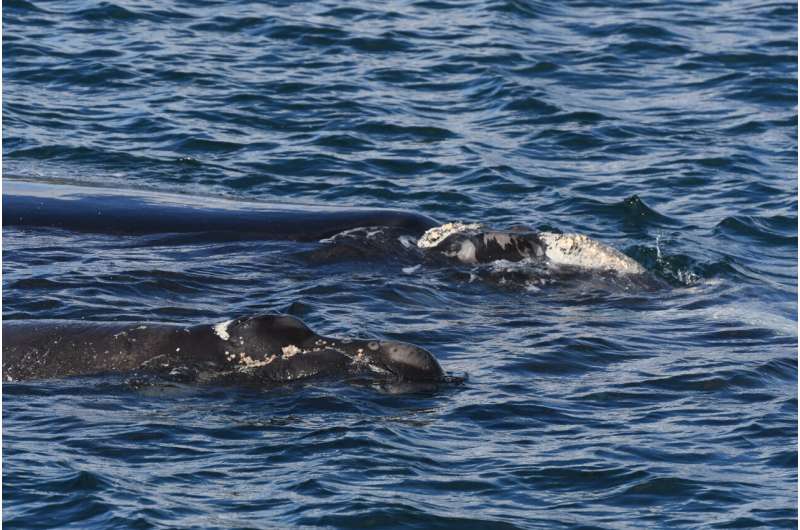Discovering the whereabouts of the inclusive southern right whale during the warmer months

Southern right whales come to Australian shores to breed and calve during the cooler months but their whereabouts during the summer has remained a long-standing mystery, until now.
An international team of researchers from Macquarie University, The University of Western Australia, the University of Auckland and the International Whaling Commission are working together to better understand the foraging grounds of southern right whales.
Beginning this month, the team are aiming to tag at least one southern right whale off the southwest coast of Western Australia, before the whales leave our coast over summer.
The project named "Mirnong Maat" (Menang/Merningar language for "whale journey") is part of a larger initiative, which has seen the tagging of southern right whales off other countries like New Zealand, South Africa and Argentina in recent years.
"As the Southern Ocean continues to change and evolve at a rapid rate, it is becoming increasingly important to learn more about the feeding and migration patterns of these rather elusive creatures," says Honorary Professor Robert Harcourt from Macquarie University.
"In the last three years alone, we have seen the differing behaviors of 25 southern right whales in the New Zealand subantarctic. This year two mother whales are still staying around the island, while most of the other whales tagged have started migrating into the Southern Ocean and mixing with the Australian population," says Honorary Professor Harcourt.
The team hope this research will shed new light on where the whales go to feed off Australia, and if they are mixing with the New Zealand whales who are traveling long distances south off the Australian coast. Moreover, by collecting biopsy or skin samples, the researchers will also look at the genetics of the whales and microchemical markers in their skin that can tell us what they consume on their long feeding voyages.
"We collect a small skin sample at the same time as tagging a whale. This sample gives us an amazing insight into their lives; we can then tell what sex the whale is, look at genetic similarities to the New Zealand whales, and see if the whales are eating similar prey," says Honorary Professor Harcourt.
To see the latest tracks of southern right whales tagged off New Zealand, visit www.Tohoravoyages.ac.nz. Information on the Australian project will be added to the New Zealand website in the coming months. The new Australian component of this research begins this year and aims to run for the next three years.
Over time, the scientists will explore and analyze the insights into differences amongst individual whales over the duration of the three-year project. This is especially important considering a warming ocean and changes in current systems and prey availability.
Provided by Macquarie University




















